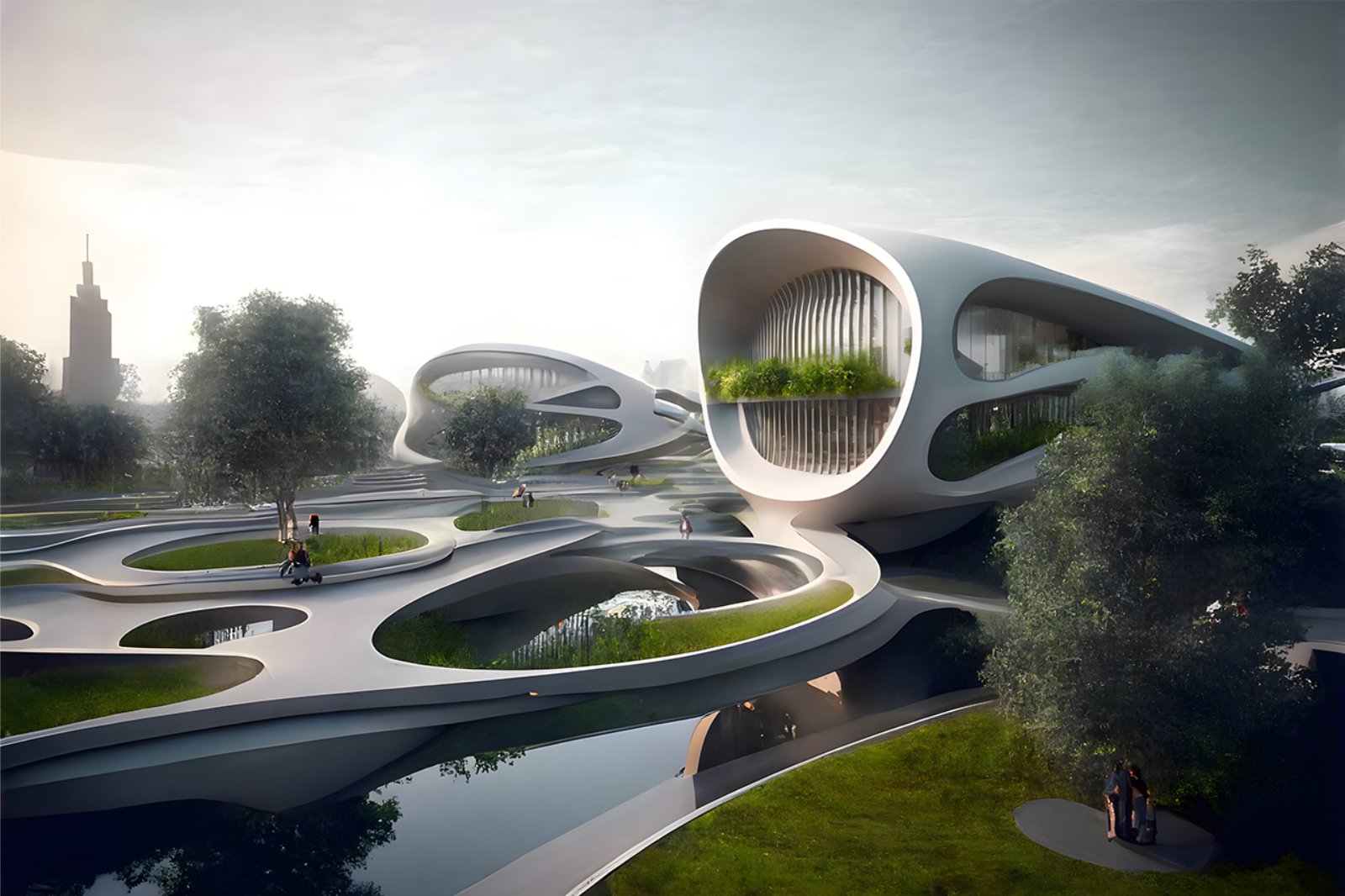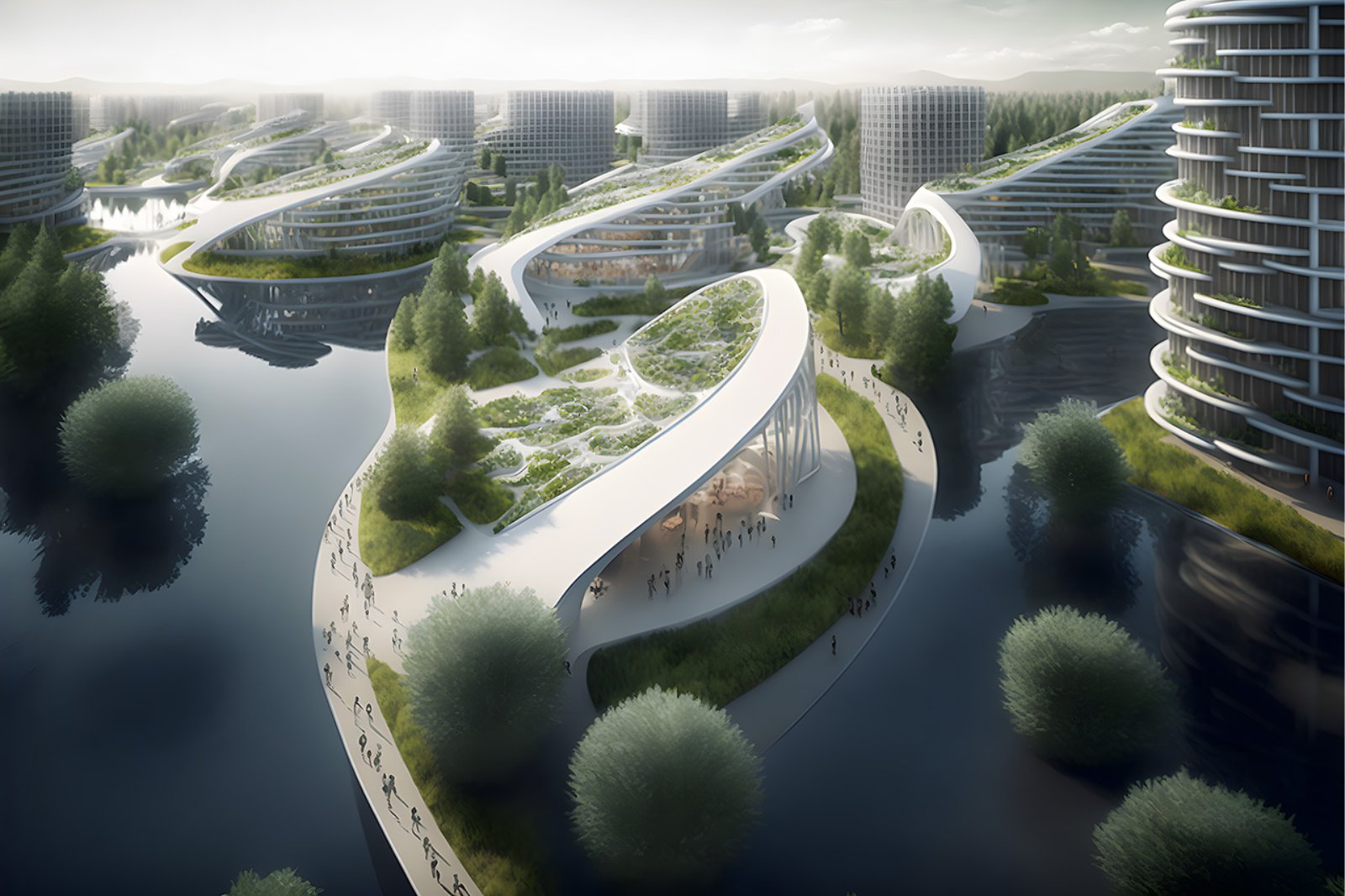Luca Curci Architects, in collaboration with Tim Fu Design, presents Floating City, a project proposal for a sustainable floating city for 50.000 people, has been conceived by an international team of architects and designers with the support of Artificial Intelligence.
The project combines sustainability with population density and it aims to build up a zero-energy city with 100% green transport systems. The sustainable city allows its residents to get into a healthier lifestyle, in connection with natural elements, re-thinking the traditional concept of community and society.

Several renewable energy resources, such as wind, water turbines and solar panels are also incorporated. Energy storage solutions. Water desalination. Food production and farming are integrated and follow a zero-waste policy. “Floating City is designed to support the global response to the threat of climate change”, said Arch. Luca Curci and Tim Fu.
The Floating City community will feature a total of 25 acres of interconnected platforms, which would accommodate more than 50,000 people. Each neighborhood contains hi-rise and low-rise buildings surrounded by a membrane of photovoltaic glasses which provide electricity to the whole floating system and make it energy-independent.

Green zones and vertical gardens are spread all over the floating city, while meeting and social areas are thought for community life. Farming will be integrated with social space and will enable communities to provide their own food and be self-sufficient.
Every floating island will include a community framework for living, including markets, spiritual and cultural hubs. It is possible to reach Floating City by water or by air. The floating city is equipped with external and internal docks and several naval entries. Moreover, each floating platform is provided with droneports.

Sea levels and Climate Change
Half of humanity (4 billion people) lives in cities today and 5 billion people are projected to live in cities by 2030. The world’s cities occupy just 3 percent of the Earth’s land but account for 60-80 percent of energy consumption and 75 percent of carbon emissions.
Climate change is now affecting every country on every continent. It is disrupting national economies, communities, and countries dearly today and even more tomorrow. Weather patterns are changing, sea levels are rising, weather events are becoming more extreme and greenhouse gas emissions are now at their highest levels in history.

By 2100, scientists project that the sea level will rise at least another foot (0.3 meters), but possibly as high as 8 feet (2.4 meters), if we continue carbon emissions at our current rate (NASA – The Effects of Climate Change). Floating City is a project proposal for sustainable and resilient cities. Adaptable, and scalable.
Designed to adapt to the shifting needs of several coastal cities, particularly vulnerable to sea level rise due to their low elevation, like New York, Miami, New Orleans, Jakarta, Amsterdam, Hong Kong, Shanghai, and Tokyo, the project has the potential to expand and accommodate more than 200,000 people.

The Urban System
The floating City Urban System is planned to incorporate Smart Cities technologies and to connect more than 50.000 people dividing the platforms into functional areas.
The main residential floating platform is connected, by water and air, to all the other platforms of offices, government departments, healthcare facilities, and educational institutions, including all levels of schools and universities.

The interconnected system also works as a tourist destination with several floating areas more oriented to the lifestyle amenities such as hotels, wellness and spa centers, sports centers, shopping malls, bookshops, and leisure attractions.
Floating City will be presented for the first time during the Biennale Architettura 2023 “The Laboratory of the Future”, at the Palazzo Albrizzi-Capello and in other prestigious venues in Venice from May 20th to November 26th, 2023. Source by Luca Curci Architects and Tim Fu Design and images Courtesy of Luca Curci Architects.







